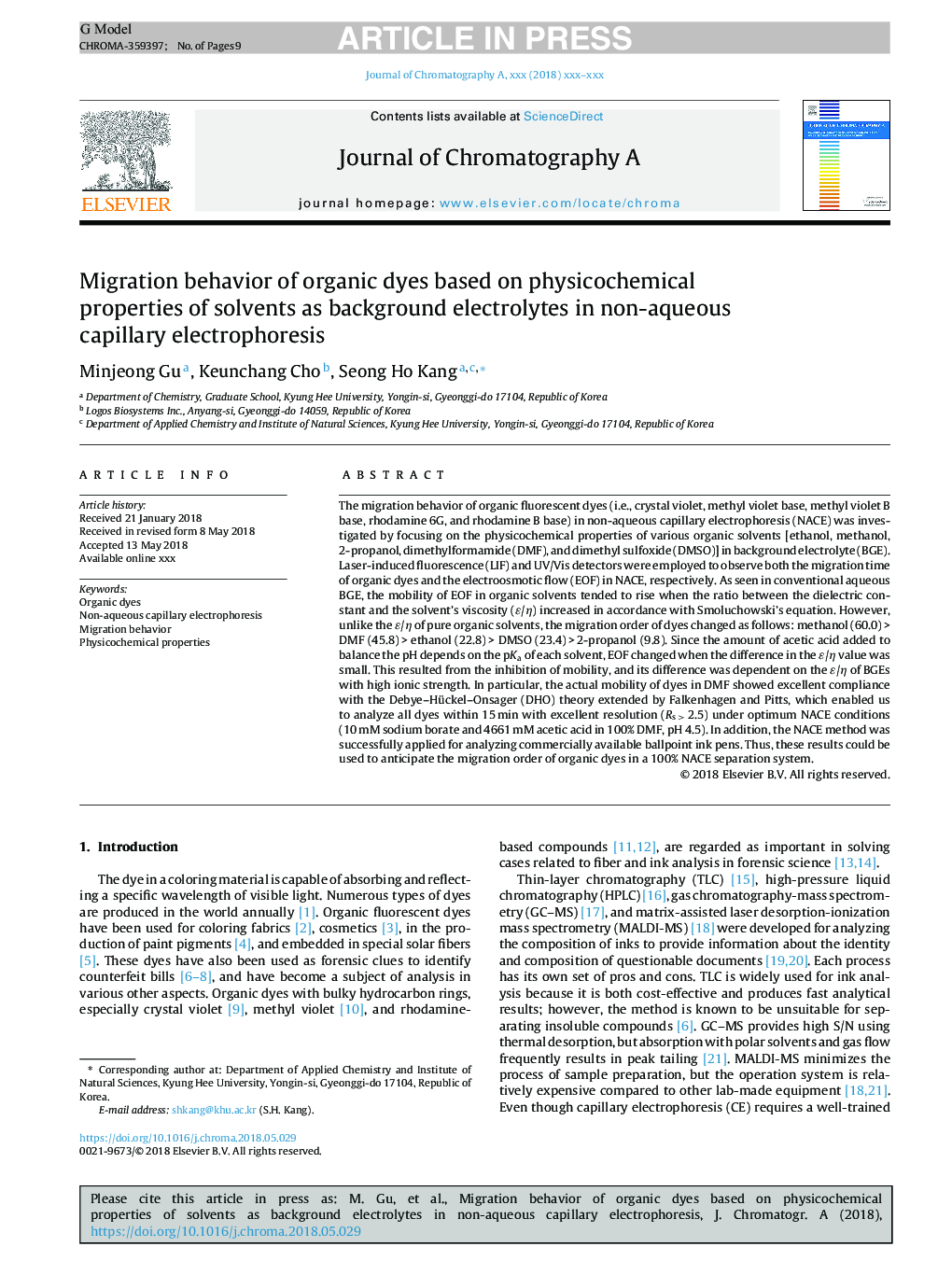| کد مقاله | کد نشریه | سال انتشار | مقاله انگلیسی | نسخه تمام متن |
|---|---|---|---|---|
| 7607837 | 1493366 | 2018 | 9 صفحه PDF | دانلود رایگان |
عنوان انگلیسی مقاله ISI
Migration behavior of organic dyes based on physicochemical properties of solvents as background electrolytes in non-aqueous capillary electrophoresis
ترجمه فارسی عنوان
رفتار مهاجرت رنگ های آلی بر اساس خواص فیزیکی و شیمیایی حلال ها به عنوان الکترولیت های پس زمینه در الکتروفورز غیر موئینی مویرگی
دانلود مقاله + سفارش ترجمه
دانلود مقاله ISI انگلیسی
رایگان برای ایرانیان
کلمات کلیدی
رنگ های ارگانیک، الکتروفورز موئین غیر آبی، رفتار مهاجرت، خصوصیات فیزیکوشیمیایی،
موضوعات مرتبط
مهندسی و علوم پایه
شیمی
شیمی آنالیزی یا شیمی تجزیه
چکیده انگلیسی
The migration behavior of organic fluorescent dyes (i.e., crystal violet, methyl violet base, methyl violet B base, rhodamine 6G, and rhodamine B base) in non-aqueous capillary electrophoresis (NACE) was investigated by focusing on the physicochemical properties of various organic solvents [ethanol, methanol, 2-propanol, dimethylformamide (DMF), and dimethyl sulfoxide (DMSO)] in background electrolyte (BGE). Laser-induced fluorescence (LIF) and UV/Vis detectors were employed to observe both the migration time of organic dyes and the electroosmotic flow (EOF) in NACE, respectively. As seen in conventional aqueous BGE, the mobility of EOF in organic solvents tended to rise when the ratio between the dielectric constant and the solvent's viscosity (ε/η) increased in accordance with Smoluchowski's equation. However, unlike the ε/η of pure organic solvents, the migration order of dyes changed as follows: methanol (60.0)â¯> DMF (45.8)â¯> ethanol (22.8)â¯> DMSO (23.4)â¯>â¯2-propanol (9.8). Since the amount of acetic acid added to balance the pH depends on the pKa of each solvent, EOF changed when the difference in the ε/η value was small. This resulted from the inhibition of mobility, and its difference was dependent on the ε/η of BGEs with high ionic strength. In particular, the actual mobility of dyes in DMF showed excellent compliance with the Debye-Hückel-Onsager (DHO) theory extended by Falkenhagen and Pitts, which enabled us to analyze all dyes within 15â¯min with excellent resolution (Rs >â¯2.5) under optimum NACE conditions (10â¯mM sodium borate and 4661â¯mM acetic acid in 100% DMF, pH 4.5). In addition, the NACE method was successfully applied for analyzing commercially available ballpoint ink pens. Thus, these results could be used to anticipate the migration order of organic dyes in a 100% NACE separation system.
ناشر
Database: Elsevier - ScienceDirect (ساینس دایرکت)
Journal: Journal of Chromatography A - Volume 1560, 27 July 2018, Pages 82-90
Journal: Journal of Chromatography A - Volume 1560, 27 July 2018, Pages 82-90
نویسندگان
Minjeong Gu, Keunchang Cho, Seong Ho Kang,
